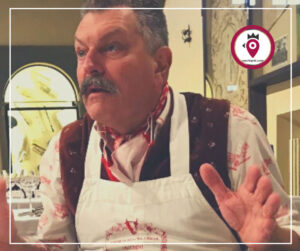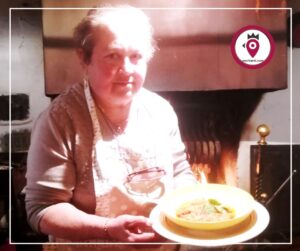Articolo disponibile anche in: Italian
The necessities for living a dignified life can be found on every farm. The vegetable garden guarantees seasonal vegetables all year round. The hens peck in the barn yard.
# PART 1: Summer on a country farm: places, colors and tastes (Part 1)
The pigs splash in their pen. The rabbits are excited in their cages. The cattle ruminate in the barn. Cereals and fruit trees are grown. Bread is baked in the wooden stove with flours from the common mill.
We drink water from the well and wine from neighboring vineyards. If there are olive trees we use olive oil stocked in terra-cotta jars for cooking and seasoning. We use pumpkin for sugar.
Salt is a precious commodity and is always in demand. We dry aromatic herbs to flavor our meals. For special occasions, religious holidays and the birth of a son we even have some meat, and we taste sweet holy wine whose grapes have been dried in the hay silo.
There is even a small chapel for praying or at a least tabernacle featuring a holy image. In nice weather, life is almost completely lived outdoors. The day is made up of hard work in the fields.
When it is still hot outside, the barnyard is the social gathering point: during the day we gather stacks of hay for thrashing and food for the animals.
The children play and the women sew and produce other household work seated on straw chairs. In the winter, family life takes place indoors: repairs, all types of manual activity, and house repairs are left for rainy days or cold weather.
When the work is done, we gather around the fireplace with a copper pot always on the fire, roasting chestnuts and telling about our day.
This is the world that was created in the Middle Ages starting with the early so called house-towers, strongly fortified turreted structures in stone, and was strengthened during the 1700s and 1800s when the house–towers were joined by the “leopoldine” farms, invented by the grand Duke of Tuscany, Pietro Leopoldo dei Lorena.
At the time of the first settlements, farm families were organized through the sharecropper system: sharecropping was a work contract where a landowner leased his lands to a sharecropper in exchange for half of crops.
The sharecropper organized the lands conceded to him to families, thus creating small farming communities in the countryside. The end of the system during the second half of the 1900s affected the solidarity of the farm civilization but did not completely vanquish it.
Farm wit, bright eyes, the art of coping, not throwing anything away, a bitter sweet disenchantment, invention of words that are a salacious part of the Italian language; these are only a few things left by the farm civilization and adopted into our everyday life.
Francesco Sorelli – Il Bisarno Oltre la Sieve


